Note
Access to this page requires authorization. You can try signing in or changing directories.
Access to this page requires authorization. You can try changing directories.
Features
- Delivery Plans 2.0 is generally available
- New iteration capacity REST API
- Copy Dashboard is now available in public preview
Delivery Plans 2.0 is generally available
We are excited to announce that Delivery Plans 2.0 is generally available! It delivers on 3 key scenarios:
- A timeline view of the plan
- Progress of the work
- Dependency Tracking
These scenarios work across teams and projects. Delivery Plans 2.0 is now native to the product so an extension is no longer required. Plans created with the original Plans extension will continue to work in Delivery Plans.
Here’s a quick comparison of the differences between Plans and Delivery Plans
| Feature | Plans 1.0 (extension) | Delivery Plans 2.0 |
|---|---|---|
| Number of teams | Limit is 10 | Limit is 15 |
| Work item timeframe | Iterations only | Start/Target date and Iteration |
| Visualization | Full card view | Condensed and Expanded views |
| Roll-up information | None | % done of child and linked items |
| Dependency Tracking | None | Yes |
| Start Time visualization | No, only where work item ends | Yes, both start and target dates |
| Card Styling | No | Yes |
Delivery Plans Features
Below are the main features. Filtering, Markers and Field Criteria are also part of Delivery Plans.
There are two main views: condensed and expanded
Delivery Plans 2.0 enables viewing all the work items in your plan on a timeline, using start and target dates or iteration dates. The order of precedence is start & target dates then followed by iteration. This lets you add portfolio level work items like Epic which often are not defined to an iteration.
There are two main views the condensed view and expanded view. You can also zoom in and out of the plan by clicking on the magnifying glass in the right-hand side of the plan.
Condensed View
The condensed view shows all work item cards collapsed meaning that not all card information is shown. This view is useful for an overall view of the work in the plan. To collapse the card fields, click on the card icon next to the magnifying icons in the right-hand side of the plan.
Here’s an example of a plan toggling between the condensed and expanded views.
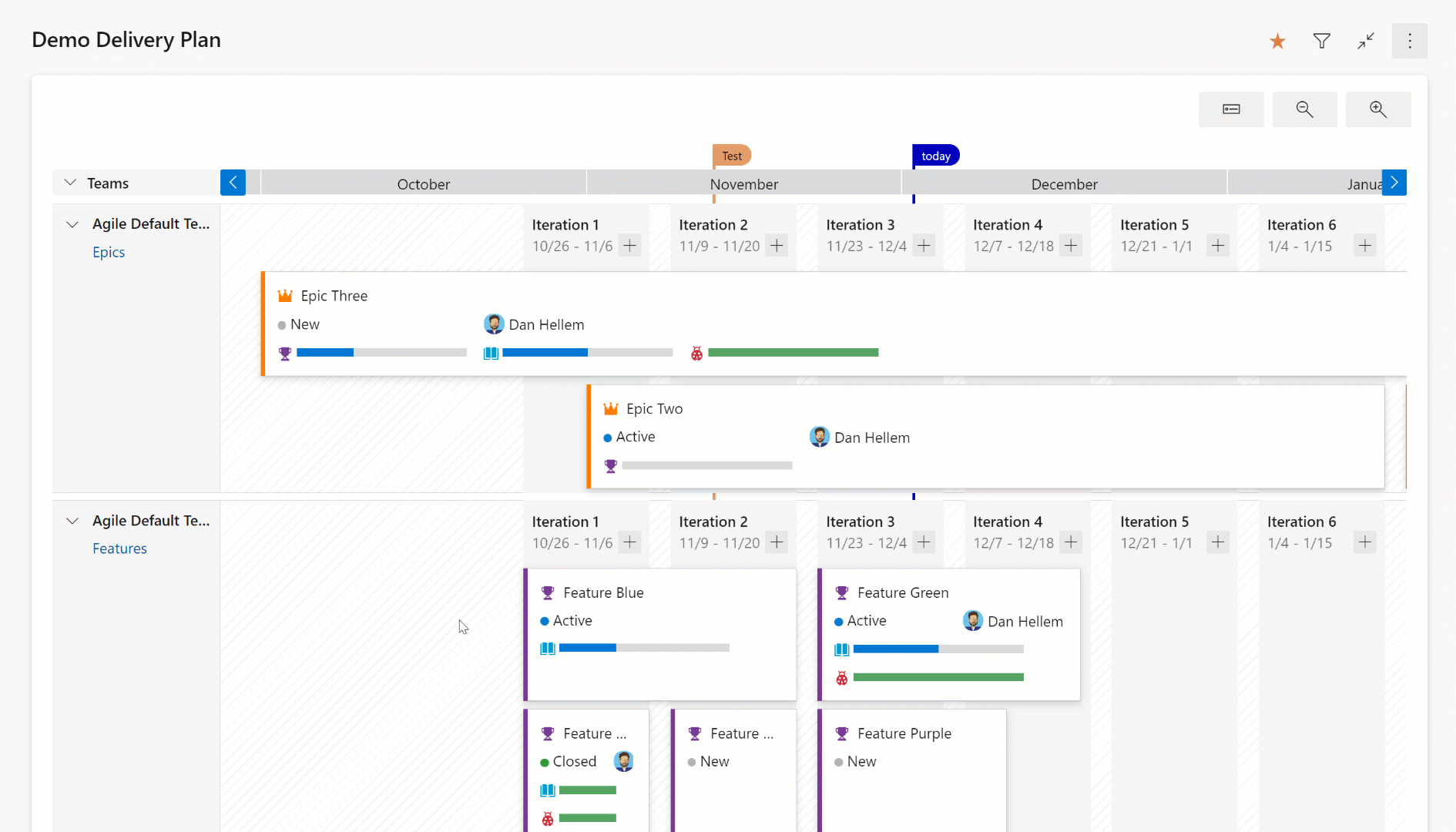
Expanded View
The expanded view shows the progress of a work item by counting the number of child and linked items and showing the percentage complete. Currently progress is determined by work item count.
Here is an example of a plan using an expanded view. Note the progress bars and percentage complete.
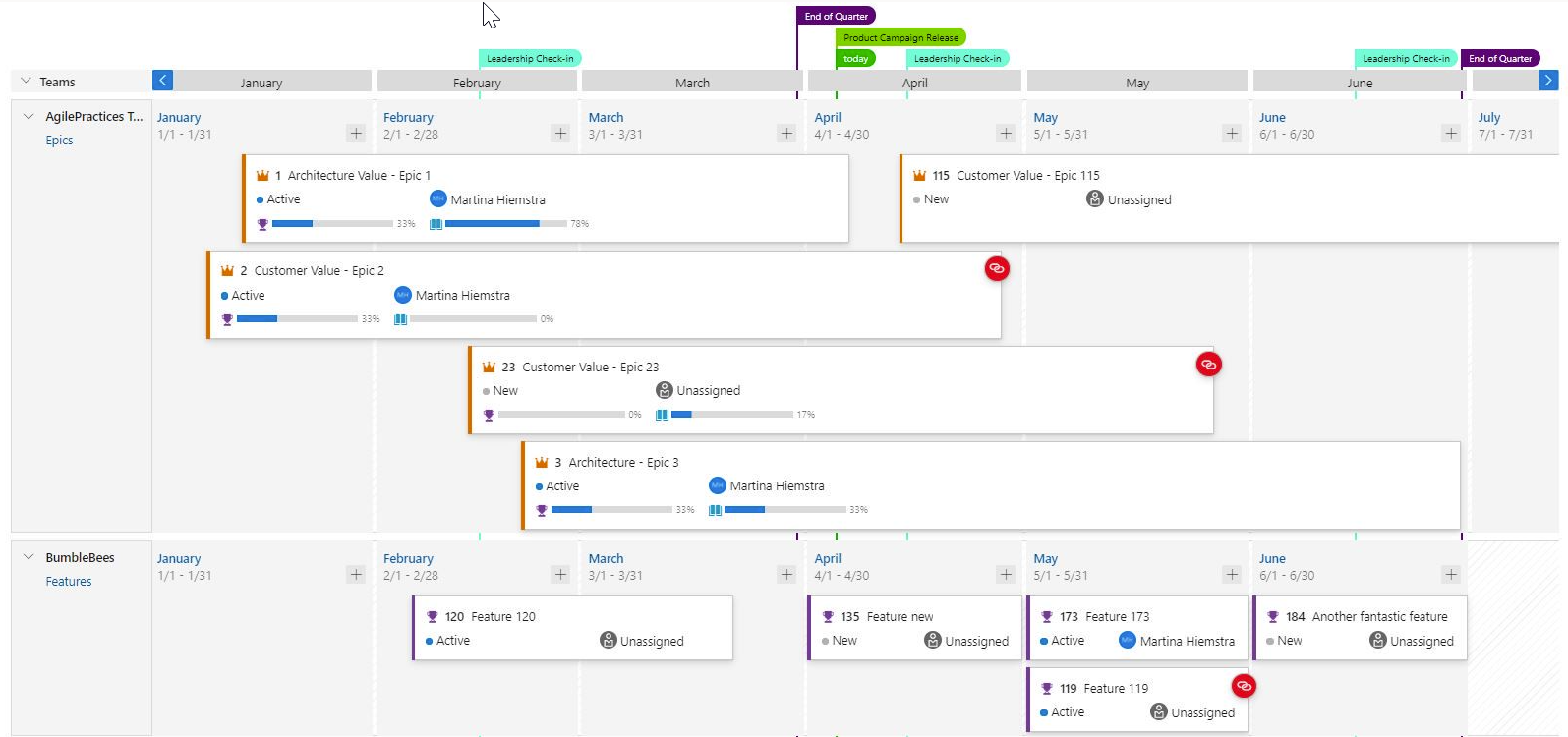
Dependency Tracking
Dependency tracking is based on predecessor and successor links being defined in work items. If those links are not defined, then no dependency lines will be displayed. When there is a dependency issue with a work item, the dependency link icon is colored red.

Viewing Dependencies
Specific dependencies are viewed through the dependency panel which shows all the dependencies for that work item, including the direction. A red exclamation mark indicates a dependency problem. To bring up the panel simply click on the dependency link icon in the upper right corner of the card. Here are examples of dependencies.
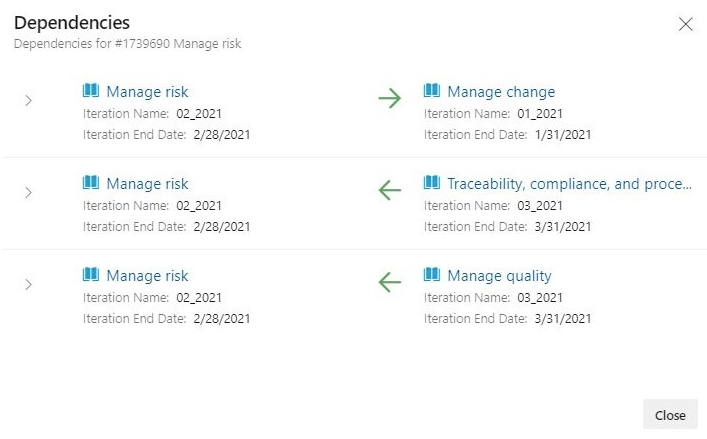
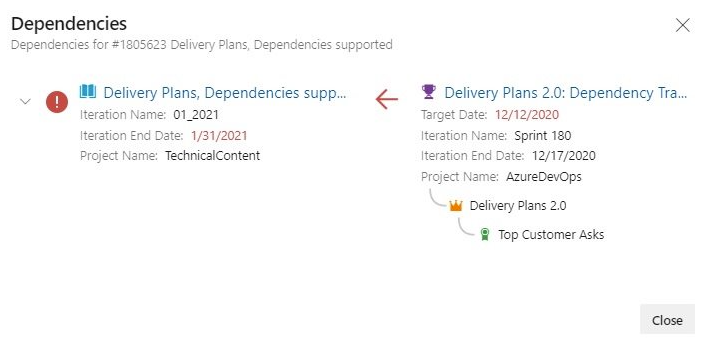
Dependency Lines
Dependencies between work items are visualized with directional arrow lines between the respective work items. Multiple dependencies will display as multiple lines. A red colored line indicates a problem.
Here are some examples.
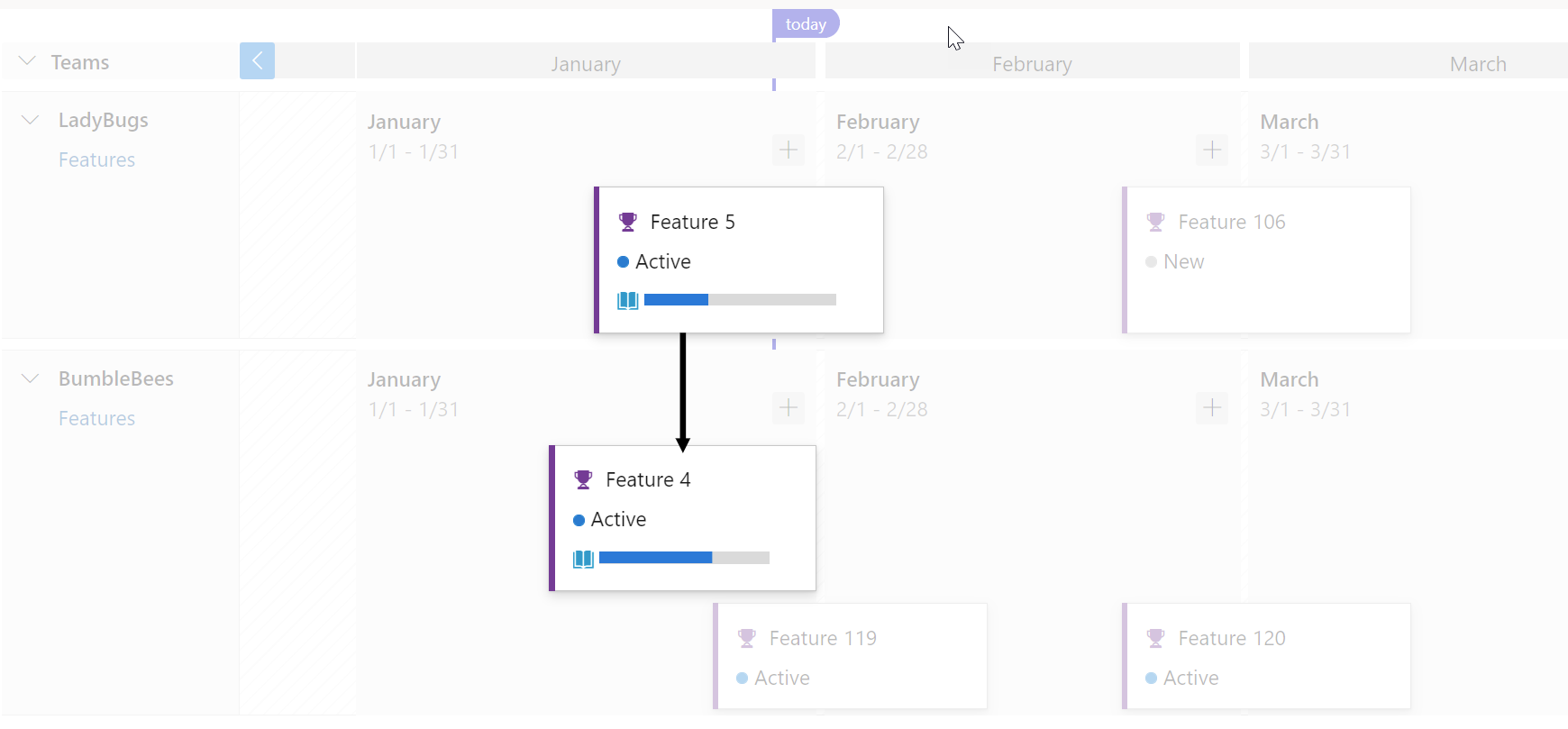
Here’s an example of a work item with multiple dependencies and it works using condensed view too.
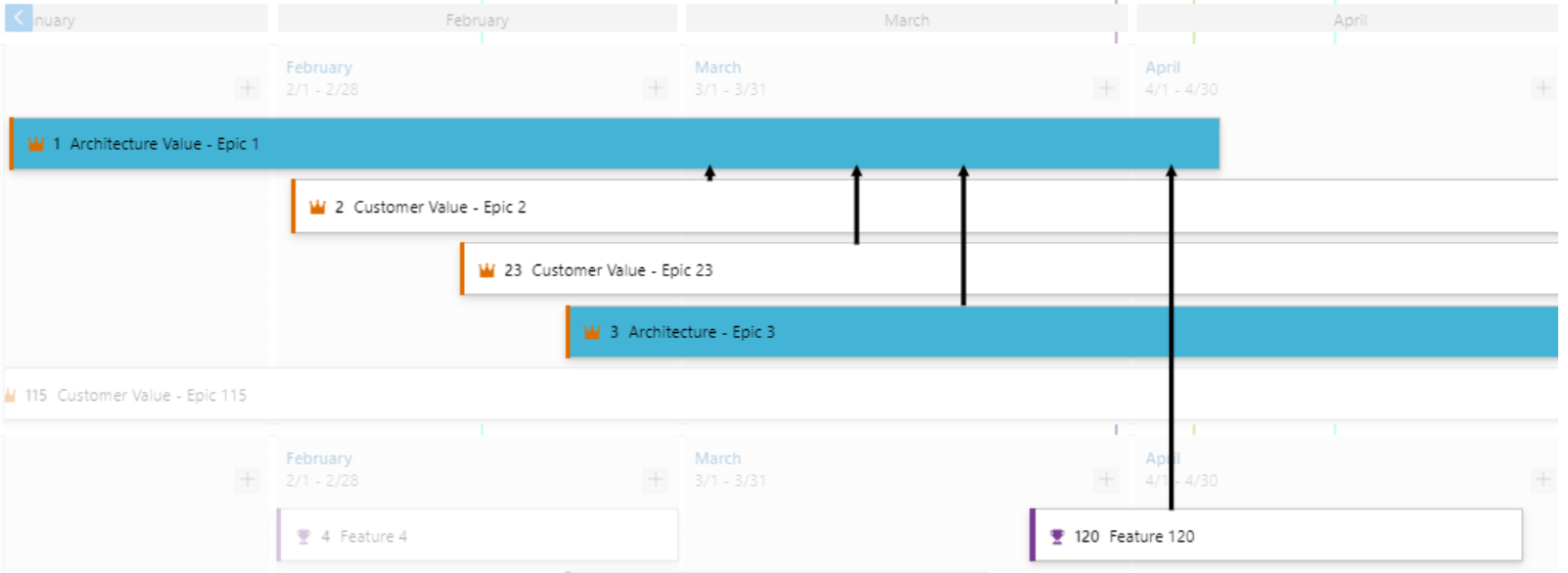
When there is an issue the line color is red, and so is the dependency icon.
Here is an example.

Card Styling
Cards can now be styled using rules, like the Kanban boards. Open the plan settings and click on Styles. In the Styles pane click on + Add styling rule to add the rule and then click Save. There can be up to 10 rules and each rule can have up to 5 clauses.
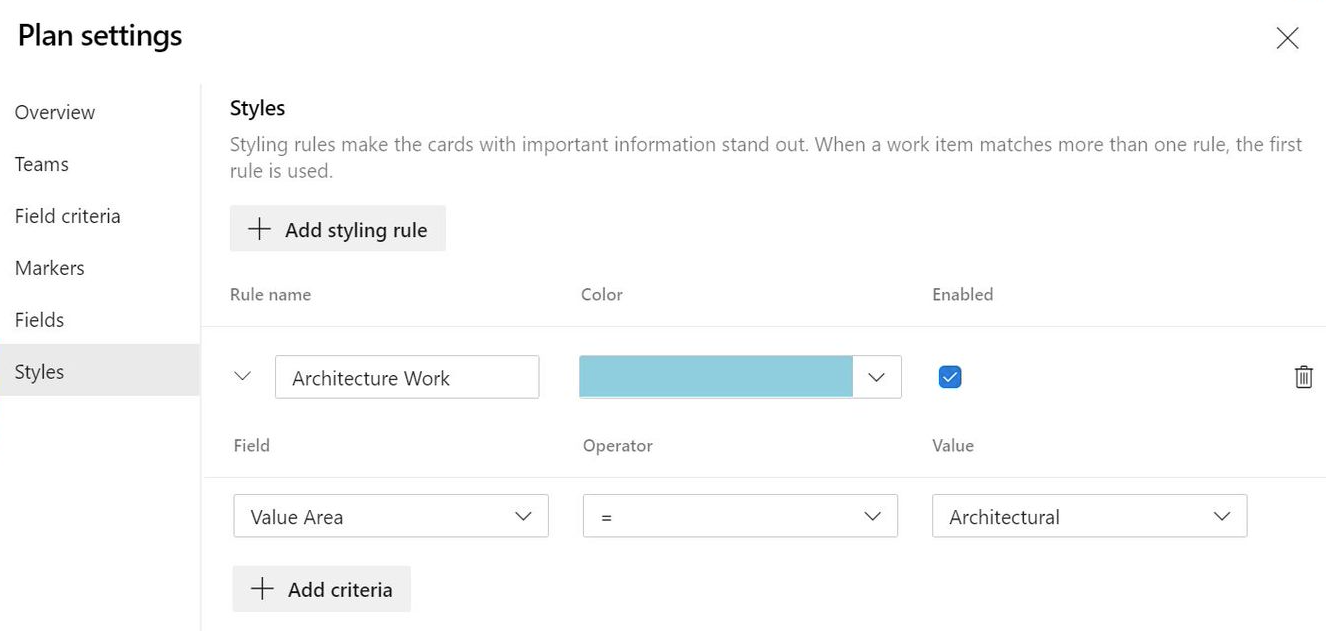
- Before
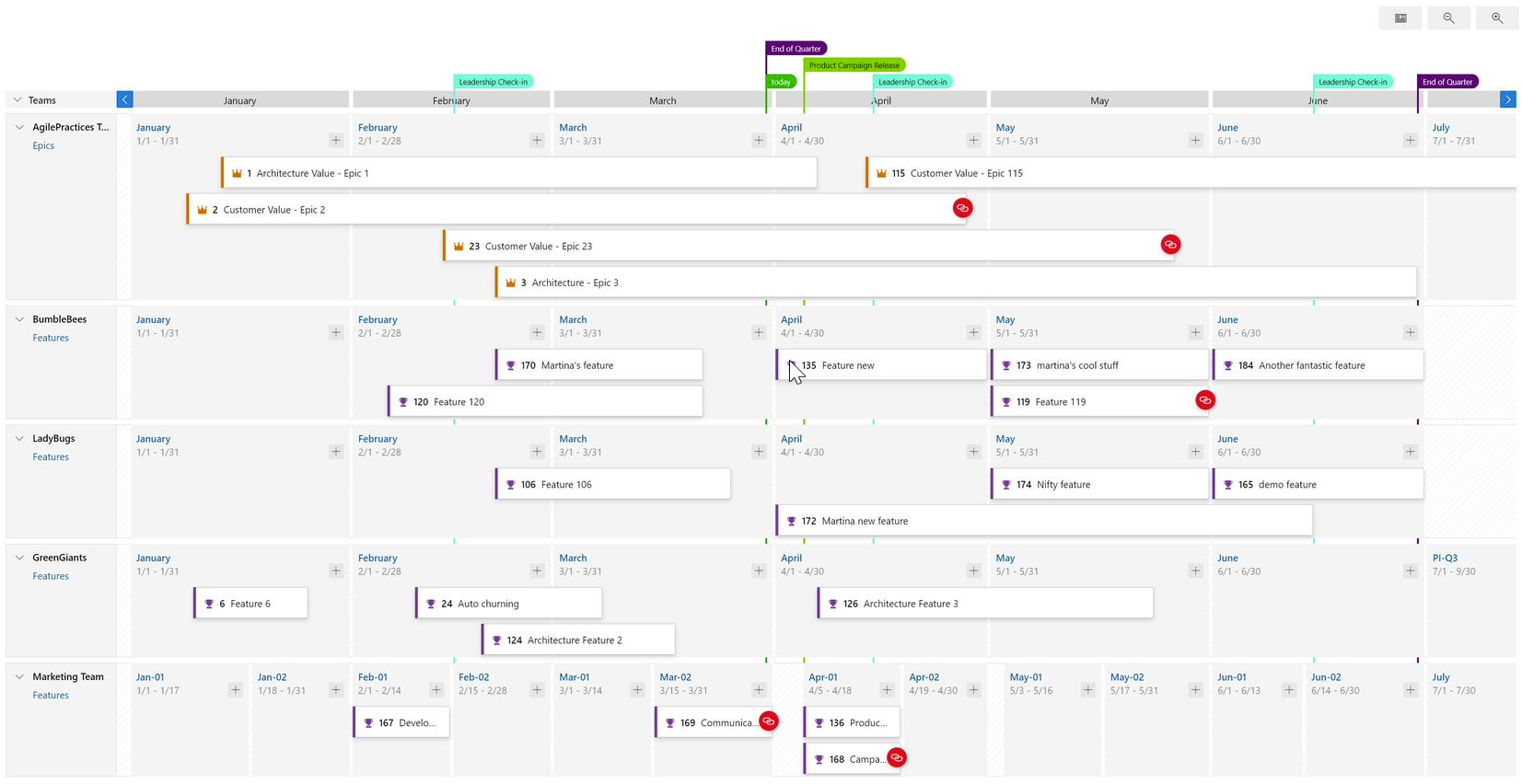
- After
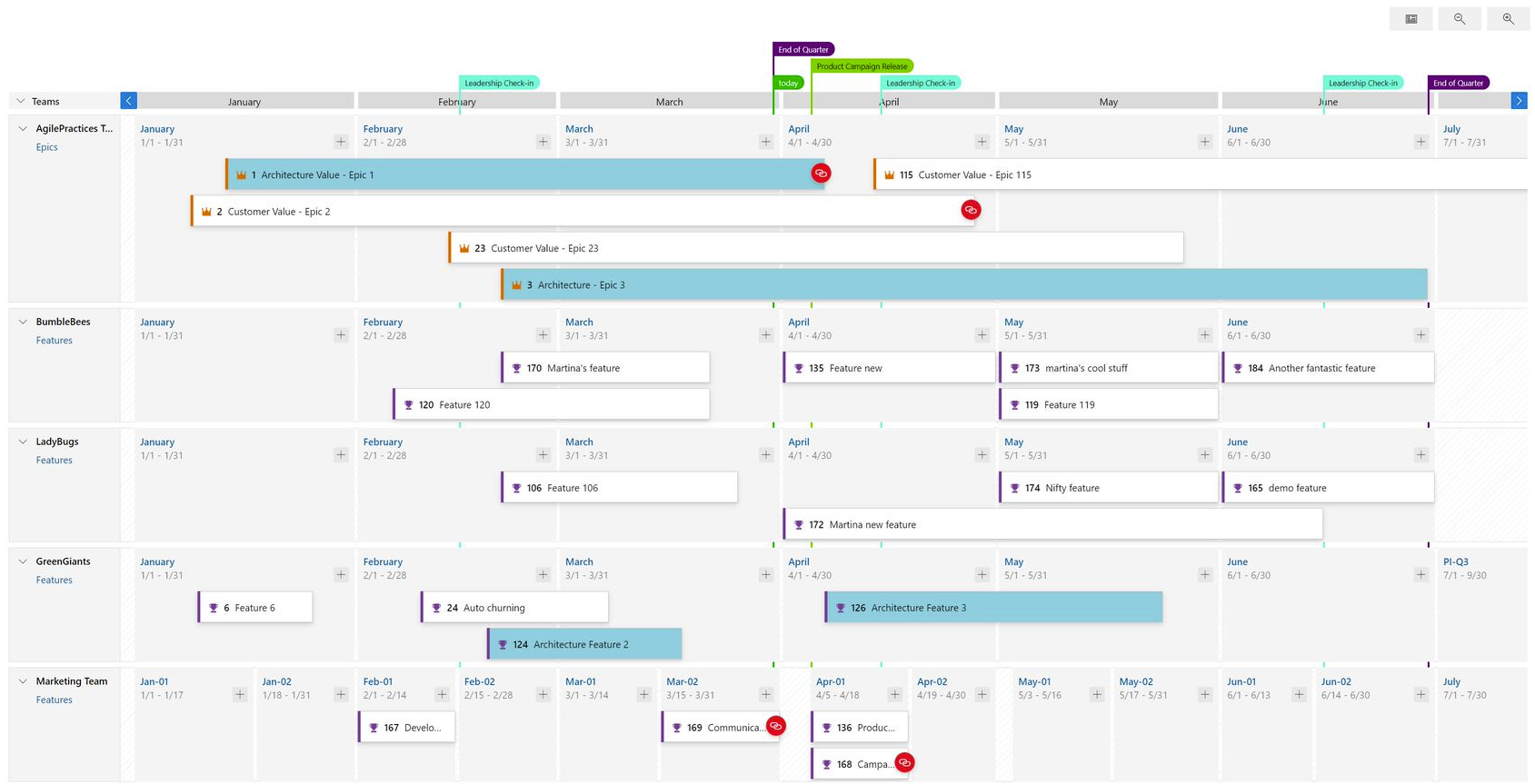
Copy Dashboard is now available in public preview
With this release, a team or project dashboard can now be copied to the same or a new project. The widgets and layout of the dashboard will be copied over but the widgets will still need to be configured with new queries and settings.
To preview this feature simply turn on the feature flag named Copy Dashboard Experience (under preview features).
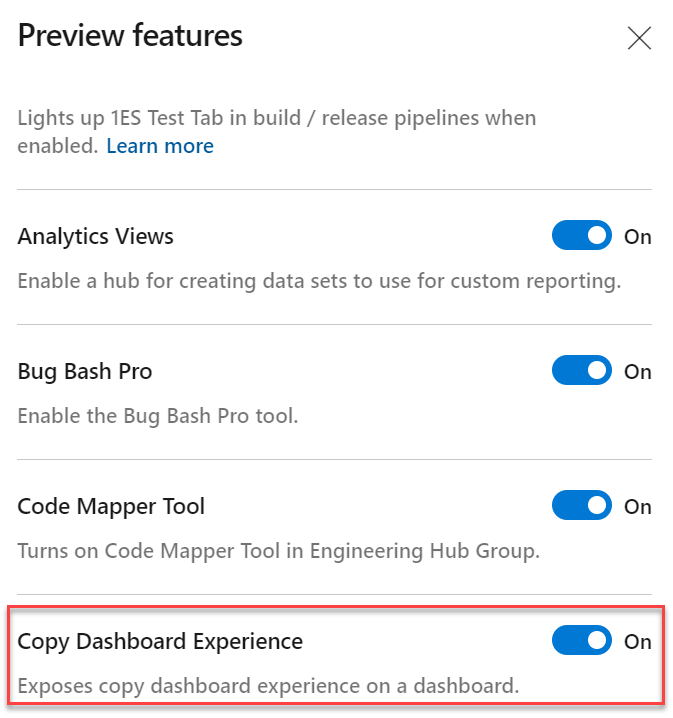
Here are the steps to copy a dashboard:
- Go to the dashboard you want to copy. From there click the menu to bring up Copy Dashboard and then click on it.
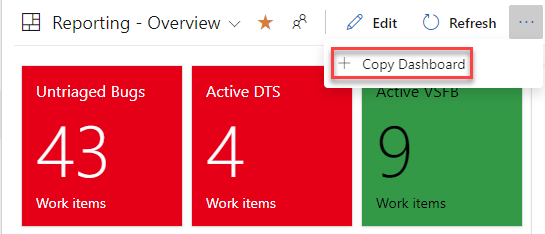
- Enter the name and description of the new dashboard, then select the dashboard type, Team or Project. When selecting a Team Dashboard, the new project and team are selected from the project and team drop down boxes respectively. For a Project dashboard, only the project is required.
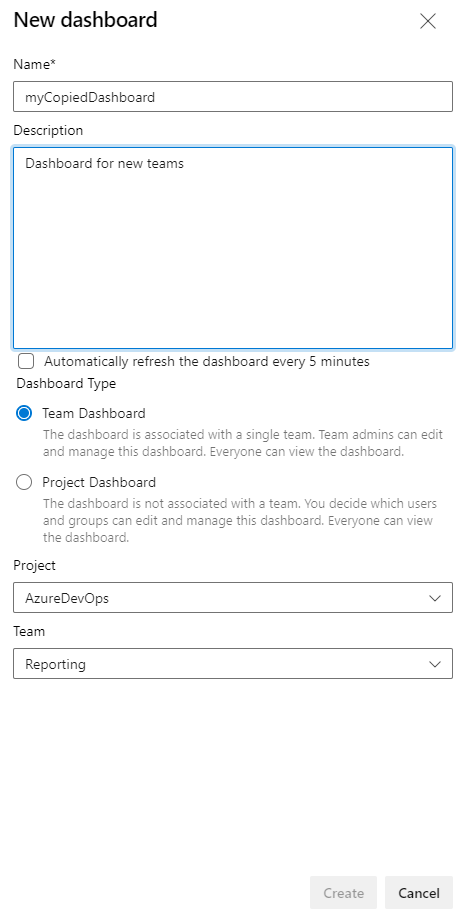
New iteration capacity REST API
You can now get the total capacity for all teams in an iteration by using the new Iterationcapacities REST Api. Provide the iterationId and the API will return the total capacity for each team associated with the iteration, as well as an overall total. This feature will make capacity planning for an increment easier. To learn more about Iterationcapacities, see the documentation here.
Next steps
Note
These features will roll out over the next two to three weeks.
Head over to Azure DevOps and take a look.
How to provide feedback
We would love to hear what you think about these features. Use the help menu to report a problem or provide a suggestion.
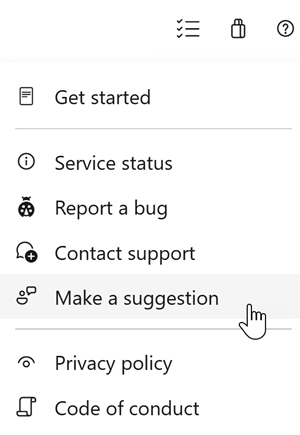
You can also get advice and your questions answered by the community on Stack Overflow.